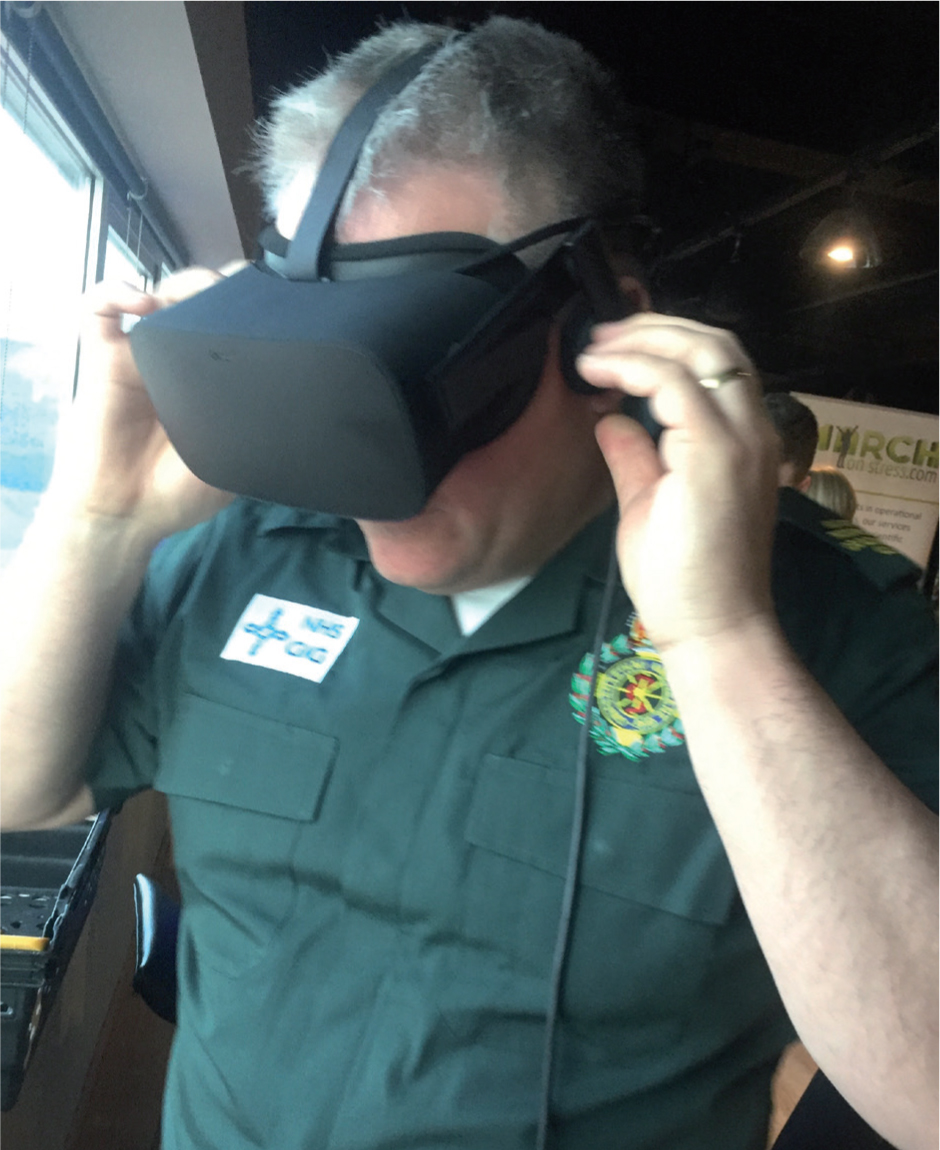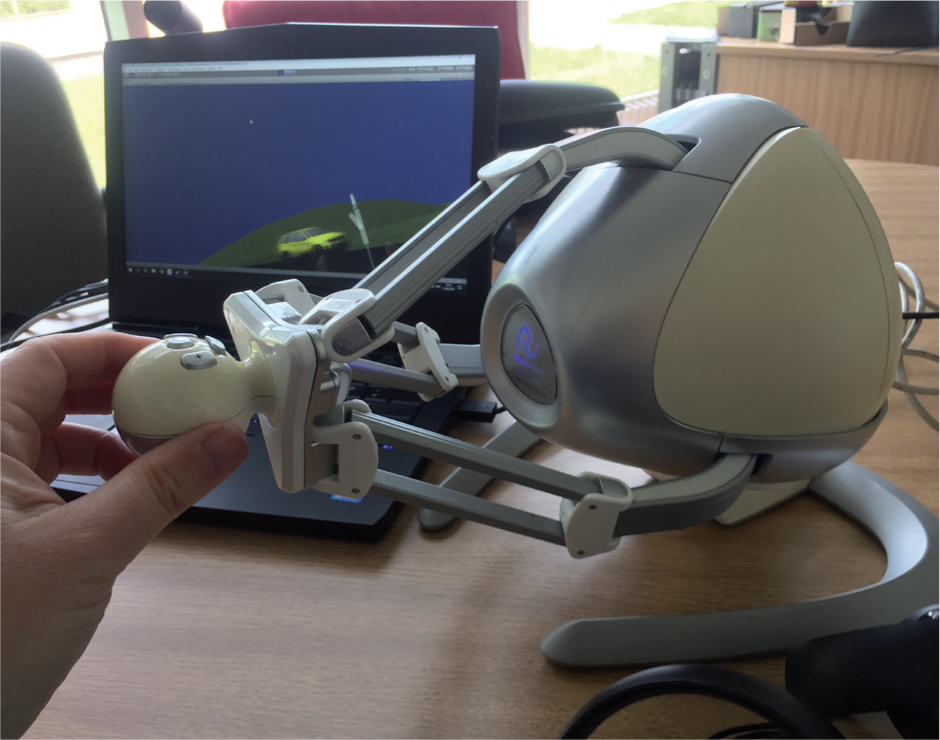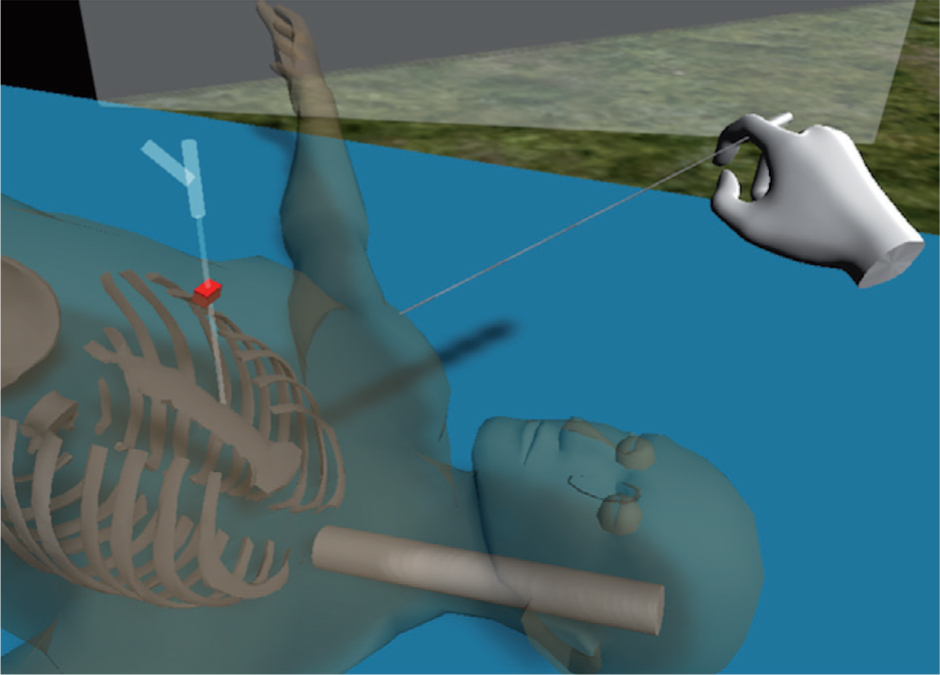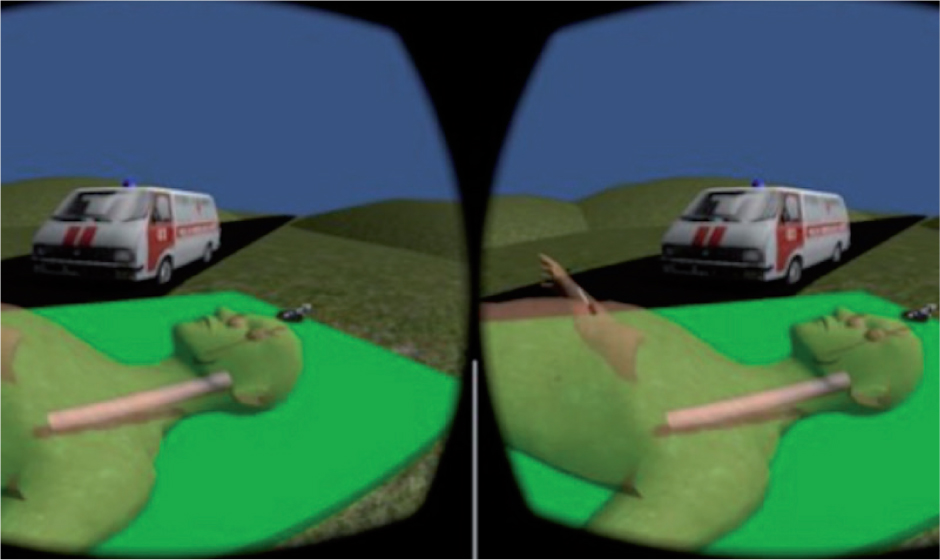The turn of the 21st century marked a significant transition in the UK and international paramedic education from vocational training to higher education development (Cooper, 2005). Paramedics have since developed their knowledge and clinical expertise across a wide range of specialties, including in primary, urgent, unscheduled, emergency and critical care (College of Paramedics (CoP), 2018). This transition is based on a balanced approach to the integration of theory and practice to ensure competency (CoP, 2019). Simulation has long been a valuable method in paramedic education as it involves techniques that imitate prehospital patient situations and facilitates learning and development of psychomotor skills to demonstrate procedural skills, decision-making and critical thinking (Jeffries, 2005; Williams et al, 2016; Birt et al, 2017a).
Development, refinement and mastery of clinical skills is often gained through teaching, learning and repeated clinical experience. However, retaining such skills is challenging, especially when they are infrequently used and when clinicians are working in rural areas (Glazebrook and Harrison, 2006; Campbell et al, 2015; Coleman et al, 2019).
Campbell et al (2015) identified that paramedics have low levels of confidence in skills they use rarely or infrequently, and believe they need to rehearse these skills by a variety of means, including through simulation at least yearly.
Virtual reality (VR) technology is emerging as a powerful method in many areas of medical training and may be beneficial for paramedic education (Birt et al, 2017a; 2017b;Clare et al, 2017).
Because of the situated nature of care provided by paramedics, who often operate as a scattered workforce with limited opportunities to practise skills, the ParaVR project described herein focuses on maintenance of rarely performed skills following initial training.
This article reports the development of the ParaVR training for paramedics project, which is a collaboration between the Welsh Ambulance Services NHS Trust (WAST) and the University of Chester department of computer science. The ParaVR project uses VR to maintain paramedics' skills in rarely performed procedures. This includes VR training for needle cricothyrotomy (NCCT) and needle thoracostomy (NT) decompression.
Background
Skills development and maintenance for many paramedic emergency procedures are challenging because opportunities to learn and practise are limited. Such procedures may be required in rare and life-threatening situations, and need to be delivered promptly and under stressful conditions. Paramedic practice and emergency care have relied on simulation, which provides an opportunity for learners to practise clinical skills in a low-stakes setting before they perform on real patients.
Simulation is defined as ‘the imitation of tasks, relations, phenomena, equipments, behaviours and certain cognitive activities, which are present in reality’ (Özkalp and Saygıli, 2015).
Simulation is a technique that makes it possible to experience a situation in advance with the help of a guide (Gaba, 2007). A wide range of models have long been used in paramedic practice and emergency care simulation, including animals, plastic models, modified commercial mannequins, paid or unpaid volunteers, patients recently pronounced dead and cadavers (Nelson, 1990; Ferguson et al, 2016; Bengiamin et al, 2019). Uses of such models range from the introduction of Resusci Anne in the 1950s for basic life support training (Simons, 1986; Jones et al, 2015; Laerdal, 2019) to modern applications in areas such as resuscitative thoracostomy (Ferguson et al, 2016) and extracorporeal cardiopulmonary resuscitation (Whitmore et al, 2019).
Despite the many potential benefits of such models, there are practical and ethical concerns, which are discussed later in this article along with the emerging potential of VR as an important simulation tool, which may offer benefits for paramedic skills maintenance.
VR in clinical simulations
There are a wide range of definitions of VR, and it has been suggested there is lack of standardisation or coherence (Kardong-Edgren et al, 2019). In a nursing context, Padilha (2019) defined clinical virtual simulation as a complementary pedagogical strategy that gives students opportunities to improve their clinical reasoning skills through exposure to many clinical scenarios.
Cant et al (2019) suggest a three-step conceptual definition for VR involving levels of fidelity, immersion and patient depiction. Kardong-Edgren et al (2019) concur with this definition and suggest it should be further delineated to include levels of immersion that consider characteristics of presence; they also advocate that the following standardised classification of VR levels is adopted: VR: low; VR: medium; and VR: high.
Based on these criteria, ParaVR was determined to be VR: high. This is because it is immersive and includes features such as accommodating more than two sensory modalities (i.e. auditory, visual and motor/proprioceptive); stimuli are spatially oriented; a head-mounted device is used; and the visual experience is altered to match proprioceptive feedback closely.
Potential benefits of VR
Health workers have long embraced and benefited from VR technology in a variety of areas, including surgical training where it has been shown to improve technical performance of surgical procedures (e.g. Seymour et al, 2002; Nagendran et al, 2013; Davis et al, 2016; Azarnoush et al, 2017). Members of the ParaVR team have extensive experience in developing evidence-based VR applications in a variety of contexts, from minimally invasive medical procedures (John et al, 2015; Vaughan et al, 2016) to applying training for powered wheelchair users (John et al, 2018). In paramedicine, potential benefits of VR may include:
The authors therefore hypothesise that immersive VR technologies will add value to the paramedic training experience and enable skills retention.
Reflexivity of authorship team
The team includes a range of middle and senior level computer science academics who have published widely in this area.
The lead author (NR) is an advanced paramedic practitioner and ambulance service/NHS research leader with 30 years of experience in prehospital care. He is an honorary lecturer at several universities. This is important to report in terms of transparency as the paper reports early phase development which requires further evaluation through research.
Methods
Following review against NHS Health Research Authority and Medical Research Council (2019) guidance, the project was not classed as research at this stage but as early phase innovation and prototype development.
The WAST research and development forum maintains oversight of ParaVR, and future research will be required to produce generalisable findings. A team of VR developers, researchers, paramedics and trainers from the University of Chester and WAST developed ParaVR in the stages below.
Task 1. Requirements specification
The University of Chester and WAST worked collaboratively to specify the requirements for VR from the perspective of paramedic skills maintenance. These were documented and used to drive the development of the prototype system. This involved a literature review and gathering views from paramedics and training staff on the potential utility of VR for paramedic skills maintenance.
Task 2. Alpha version of the VR
At the start of this project, several affordable VR headsets were commercially available, including the Oculus Rift and the Oculus Go.
The Rift is a powerful device but has to be tethered by cables to an application computer. The Go is a tetherless device and is similar in performance to headsets that use a smartphone (such as Google Cardboard). The Go does not need a separate smartphone, however, as this is integrated into the device. As expected, a new device—the Oculus Quest—became available during prototype development. The Quest is also tetherless but provides the same level of interaction as the Rift and would be a good choice for ParaVR. This demonstrates the fast-moving nature of VR technology development.
An initial implementation prototype was produced for the two skills of NCCT and NT decompression. This was demonstrated to key stakeholders including 79 paramedics, training managers and student paramedics, and unstructured feedback was gathered.
Task 3. Beta version of ParaVR
The beta version of ParaVR was further developed, with the unstructured feedback obtained in task 2 addressed, and the application was ported to the Oculus Quest.
Task 4. Management
Along with the software development, the authors started investigating options for further research, funding and the eventual commercialisation of ParaVR. It was decided that the prototype developed during this project would be used for leverage of further grant funding for the progression of the ParaVR programme.
Results
Task 1. Requirements specification
The two skills of NCCT and NT decompression were identified as candidates for the prototype ParaVR following the literature review and after the views of paramedics and training staff had been gathered. This was as a result of these being infrequently performed life-saving paramedic skills and because of the potential utility of VR for skills maintenance.
Literature for existing paramedic VR training
Hubble and Richards (2006) previously demonstrated that paramedics can be trained at a distance, and Cone et al (2011) indicated the efficacy of VR as a platform for such distant paramedic education.
Previous VR training simulators for paramedics have been developed (Conradi et al, 2009; Birt et al, 2017a; 2017b;Clare et al, 2017), and study participants have reported that virtual patients on a virtual world platform can provide a more authentic learner environment than classroom-based scenarios (Conradi et al, 2009). Mayrose et al (2003; 2007) developed a human airway simulation model for tracheal intubation and found it to be a useful educational tool.
So far, we have found no reports in the literature of a VR simulator to incorporating paramedic NCCT or NT decompression. Some VR paramedic training simulators have been based in virtual environments such as train platforms, by the roadside (Conradi et al, 2009) or in a bus crash (Cone et al, 2011). The MESH360 project presented a work-in-progress VR for paramedic life-and-death pressure situations or critical care (Cochrane et al, 2016).
Needle cricothyrotomy
NCCT is a critical surgical intervention which may be life-saving during difficult airway management and a ‘cannot ventilate, cannot intubate’ situation to gain control of the airway that cannot otherwise be accessed in an emergency (Davies, 1999, Wong et al, 2003). If performed correctly, it is a quick and essential life-saving procedure.
Catheter-over-needle cricothyrotomy seems to be a fast and easy procedure to perform (Vadodaria et al, 2004). However, most clinicians trained to conduct it have only very limited experience of carrying it out, as only 1% of all critical airways require cricothyrotomy (Demirel et al, 2016). Therefore, it is rarely used and, if performed, this is nearly always during a crisis, so trainee experience is limited.
The authors found some basic existing simulation devices for general resuscitation which can support NCCT among other procedures (Perkins, 2007). These are simple part-task or procedural trainers which are most commonly used to develop basic psychomotor skills. No measurements to demonstrate how realistic the feeling is compared to a real procedure on a live human were available. It was recognised that in such an NCCT procedure, haptic feedback of accuracy would be an important feature. Porcine and human cadavers, although more realistic, also have their limitations, as the cricothyroid membrane becomes damaged with only one use.
Needle thoracostomy (NT) decompression
NT decompression can be a life-saving procedure in trauma patients experiencing a tension pneumothorax, and is recommended by prehospital trauma guidelines (Kaserer et al, 2016; Leech et al, 2017; Association of Ambulance Chief Executives (AACE), 2019).
The technique for NT decompression requires knowledge of anatomic landmarks and a degree of surgical dexterity. The first choice of site is the second intercostal space (ICS) (below the second rib) in the mid-clavicular line and, in the UK, a standard 14G 4.5 cm long cannula is commonly used (Leech et al, 2017).
NT decompression is, again, infrequently performed by paramedics. Kaserer et al (2016) found that prehospital NT decompression was only performed in 1.1% of cases in a 6-year period involving 2261 severely injured patients.
There are also possible complications that can result in failure of prehospital NT decompression, which can be modelled in the simulator. One reason for failure is that the length of standard needles and catheters for the second ICS is insufficient to reach the intrapleural space; this depends on the morphology of the patient. When the needle/catheter reaches the pleural space, pressure is applied allowing some release of gas and fluid but the catheter retracts into the intercostal muscle once the needle is withdrawn. Needles are also prone to kinking and obstruction by blood or tissue.
Some authors recommend the fifth ICS mid-axillar line for prehospital NT decompression to overcome these complications because the chest wall is thinner in this area (Inaba et al, 2011; Schroeder et al, 2013). However, many UK ambulance services, including WAST, now use the Russell PneumoFix (Prometheus Medical Technologies, Hope under Dinmore, 2019), which is designed and indicated specifically for this purpose, with an 11 cm long 12-gauge catheter that is long enough to reach the pleural cavity of the vast majority of patients. The material used in the Russell PneumoFix also minimises the risk of the catheter kinking.
In general, obesity is becoming more prevalent in the population and the depth to the pleural space is likely to increase on a population level. This is related to previous research on VR modelling of various patients of various body mass index (BMI), which affects the depth of needle insertion (Vaughan et al, 2014).
Task 2. Alpha version of the VR
Oculus Rift and hands interaction
In our working prototype VR training simulator, the Oculus Rift head-mounted display (HMD) was used. The Rift comes with wireless hand controllers (Figure 1), which can be used by the learner or trainer to interact with the virtual model, pick up a needle and insert it into the virtual patient.

The learner is holding the controllers while a model of a human hand is rendered in the virtual world. The controllers are ergonomically designed to allow the learner to point, grab, pick up and interact with virtual objects in an intuitive fashion; after a few minutes of use, the learner forgets that they are interacting with a controller and it feels as if they are using their own hands directly. When the needle is inserted, the needle stays in place after the hand controllers let go of it.
For haptic feedback, the VR simulator has also been combined with a Novint Falcon haptic device (Figure 2). This provides three degrees of freedom force feedback. As the learner moves the handheld controller on the end of the interface, the virtual needle follows its movement in the virtual world. This provides more fidelity for needle insertion as you can feel the sensation of the needle puncture and an appropriate response as it penetrates different tissue types.

The Falcon has not been designed for use in immersive VR, however, so integrating it seamlessly into the simulator is a challenge. It also adds to the cost of creating the simulator and can only be used if a separate computer is running ParaVR. It remains an option that can be deployed when needed. However, the default mode is to use just the tracked hand controllers that come with the VR headset.
Virtual environment 3D software development
The virtual environment for the paramedic simulator was designed to reflect the spontaneous nature of emergencies that can occur in unpredictable locations (Figure 3).

The environment was developed using 3D modelling software. The virtual training simulator was ported onto the Oculus Go and the Google Cardboard VR platform (Figure 4) to demonstrate the feasibility of paramedic training using a smartphone without the need for a dedicated computer. However, these platforms do not support the use of a haptic device or dual hand controllers, so the virtual model of the needle can only be picked up using a vision-based interface, which has less fidelity.

Feedback from paramedics
Unstructured feedback has been provided by various paramedics and people in organisations including WAST, as well as paramedic educators. This included presentations and question-and-answer sessions at a Bevan commission Gadget Hack event (Bevan Commission 2018), a WAST big bang recruitment event and Bevan Commission Innovators event at the Senedd Cymru/Welsh Parliament (Bevan Commission, 2020). These events included a wide range of paramedics, trainers, policy makers, academics, industry and senior operational and clinical staff. ParaVR was demonstrated to 79 paramedics, and the authors continue to work closely with supporting team members in the NHS and key stakeholders to demonstrate their developed system and gather feedback.
The authors recognise that, despite these activities and the potential benefits of VR, there are numerous complexities relating to the user interface, interoperability and human factors (Kumar et al, 2011). Future research is therefore required to gather critical evidence and evaluation. This will help to further explore these factors along with commercial potential, applicability and potential of the developed technology in the NHS.
Discussion
Simulation VR technology is increasingly used for training medical professionals and is anticipated to become more relevant in the setting of restricted clinical training hours, with a heightened focus on patient safety (McGrath et al, 2018). Paramedics often work as a scattered and mobile workforce, and skills maintenance may be a challenge.
The CoP (2018) encourages the use of simulated practice at all levels and, in its recently released Consensus statement: a framework for safe and effective intubation by paramedics (CoP, 2018), contends that the use of simulation enables the development of competence in not only the technical but also the non-technical skills related to undertaking intubation and associated decision-making, particularly in the prehospital setting.
Simulation must possess the property of fidelity, which can be defined as consistency with real life—in other words, authenticity (Özkalp and Saygıli, 2015). ParaVR presents an opportunity to simulate scenarios a paramedic may experience and provide a rich environment where participants can respond realistically. ParaVR can also be tailored to reflect anatomical variations and introduce different paths that the paramedic can follow in response to changes in the scenario. Features such as these benefit those taking part in simulation learning as they can transfer what they have learned during the simulation to real life (Özkalp and Saygıli, 2015).
The authors argue that ParaVR has many potential advantages over traditional paramedic simulation learning, including allowing full immersion of the paramedic into a crafted environment and the ability to experience stressful situations without risk to patients. Mannequins, animal models and even human cadavers may be more realistic but they may be impractical as membranes become damaged during use, plus they are expensive and may not be easily accessible.
Limitations
The authors opted for the techniques of NCCT and NT decompression for the initial development of ParaVR, as these are infrequently performed life-saving paramedic skills. More advanced skills such as tracheotomy, lateral thoracostomy and tube thoracostomy may be more effective than the skills applied in ParaVR, but these are performed only by physicians in many emergency medical systems.
Common alternative locations exist for NT decompression, which include the fourth and fifth intercostal spaces at both the anterior axillary line, and the midaxillary line. Indeed, evidence from observational studies suggests that the fourth or fifth ICS-anterior axillary line has the lowest predicted failure rate of NT decompression in multiple populations (Laan et al, 2016).
Future changes in paramedic practice education may therefore involve alternative sites and more advanced techniques as skills and evidence evolve, which may make some of the developments in ParaVR redundant. However, such situations may benefit from the flexibility of VR, as large-scale, inexpensive tailored software upgrades may be introduced in response to such emerging changes in practice in a way that expensive physical models cannot.
The authors also recognise the need for future research to gather critical evidence and evaluation before adoption.
Next steps
The ParaVR team is collaborating with other UK ambulance trusts to attract further funding to determine whether ParaVR leads to more effective education through validation studies. The progression of this work therefore includes the need for a multicentre trial. Such future research and development of ParaVR may benefit from adopting an integrated systems design approach (Scerbo et al, 2011).
Conclusion
VR simulation is an emerging educational tool, which holds the important potential to enhance paramedic learning and skills maintenance.
The work of the ParaVR programme reported in this paper is the first step in the development, testing and scaling up this technology for paramedic practice.
The ParaVR programme has followed four stages of development. This included exploring the requirements specification, which identified NT decompression and NCCT as candidates for VR skills maintenance. An alpha version of the VR was developed and, following unstructured feedback, progressed to a more refined beta version of ParaVR. Future work relating to this programme will focus on demonstrating its effectiveness, both in terms of education and cost.

